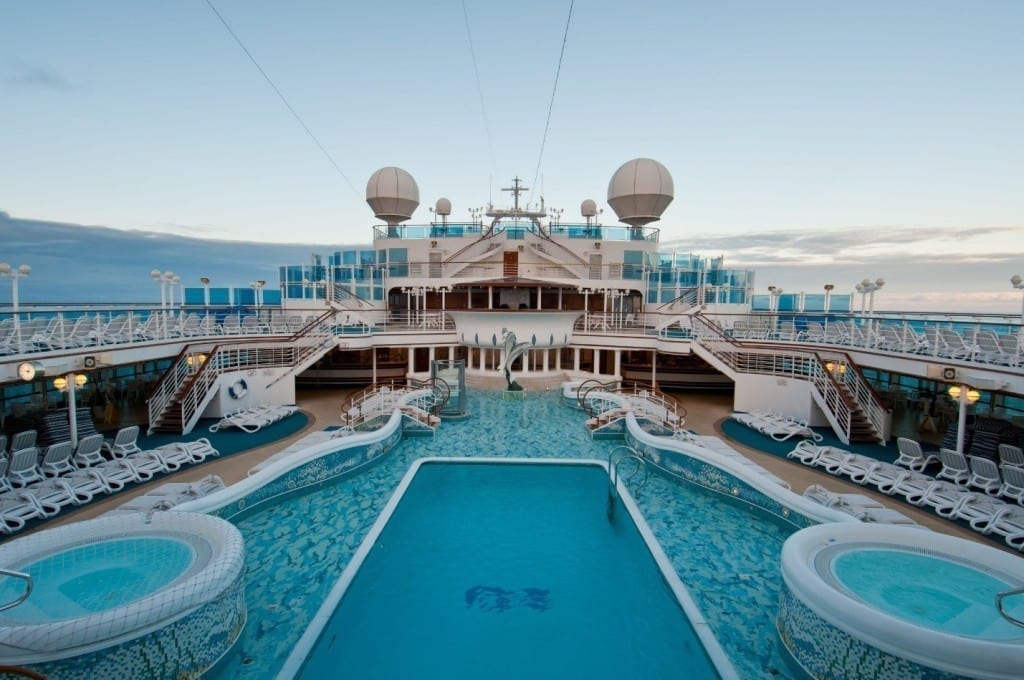Oftentimes, planning for a vacation can be nearly as fun as the vacation itself. The possibilities are numerous—you can choose from a seemingly infinite number of domestic and foreign locations, book an accommodation in one of millions of hotels, resorts, and inns, and design an itinerary that accommodates your family’s unique tastes. You can plan a vacation that accommodates any budget, and research destination restaurants that can satisfy the most adventurous (or timid) of palates.
But when it comes to overseas travel, your options for mode of transportation are decidedly more limited. Today, Americans traveling to other continents typically must choose between two major transportation methods—traveling via plane, or traveling via cruise ship. To help you determine the best option for your vacation, we’ve prepared a comparison of both airplane and cruise ship travel elements.
Cost. You typically pay much less upfront for airfare than you would a cruise, with some cruises costing as much as triple the cost of airfare to the same destination. However, the price you pay to take a cruise typically covers the cost of room, meals, and entertainment while on the ship, so you may end up spending less money total over the course of your entire vacation.
Safety. Despite the prevalence of flying phobias, air travel is statistically quite safe. Out of the millions of flights that occur each year, typically only a very small percentage see accidents—statistics show that your odds of dying on a commercial flight are less than one in seven million. By way of contrast, your odds of dying in a car accident in the US are about one in 83.
Though cruise travel also enjoys a statistically low number of reported annual fatalities, it is not always easy to gauge the reality of cruise travel safety. That’s because there is no central public database for cruise ship accidents and maritime casualties available to the public and, until recently, ships weren’t required to report onboard crime. Over the last few years, the safety of cruise travel has come under scrutiny due to fatal disasters such as the Costa Concordia crash and the norovirus outbreak on the Crown Princess.
Travel time. If you’re hoping to get to your destination as fast as possible, a plane is probably the best option for you. Even flights to the most far off destinations don’t usually take significantly more than a day, while some cruise ships won’t reach their foreign destinations for a week. However, when you take a cruise, usually the process of traveling to a destination is just as enjoyable as visiting the destination itself. Rather than being confined to an airplane’s small seat, you are free to walk around, swim in the pool, and use fitness centers and spas on cruise ships. Cruise lines work hard to dazzle guests, supplying them with entertainment, activities, and extravagant meals during their journey. In short, if you’re more interested in an enjoyable journey than in reaching your final destination, a cruise may be a good fit.
One additional cruise safety consideration to note is that many accidents and injuries that occur on cruise ships fall under maritime law, meaning they must be handled differently from standard personal injury cases. If you or a loved one is injured on a cruise ship, contact a cruise ship injury lawyer. Only an attorney with experience in maritime law has the knowledge and training to help you protect your rights and ensure maximum compensation.
About the Author:
Andrew Winston is a partner at the personal injury law firm of The Law Office of Andrew Winston. He has been recognized for excellence in the representation of injured clients by admission to the Million Dollar Advocates Forum, is AV Rated by the Martindale-Hubbell Law Directory, and was recently voted by his peers as a Florida “SuperLawyer”—an honor reserved for the top 5% of lawyers in the state—and to Florida Trend’s “Legal Elite.”
















